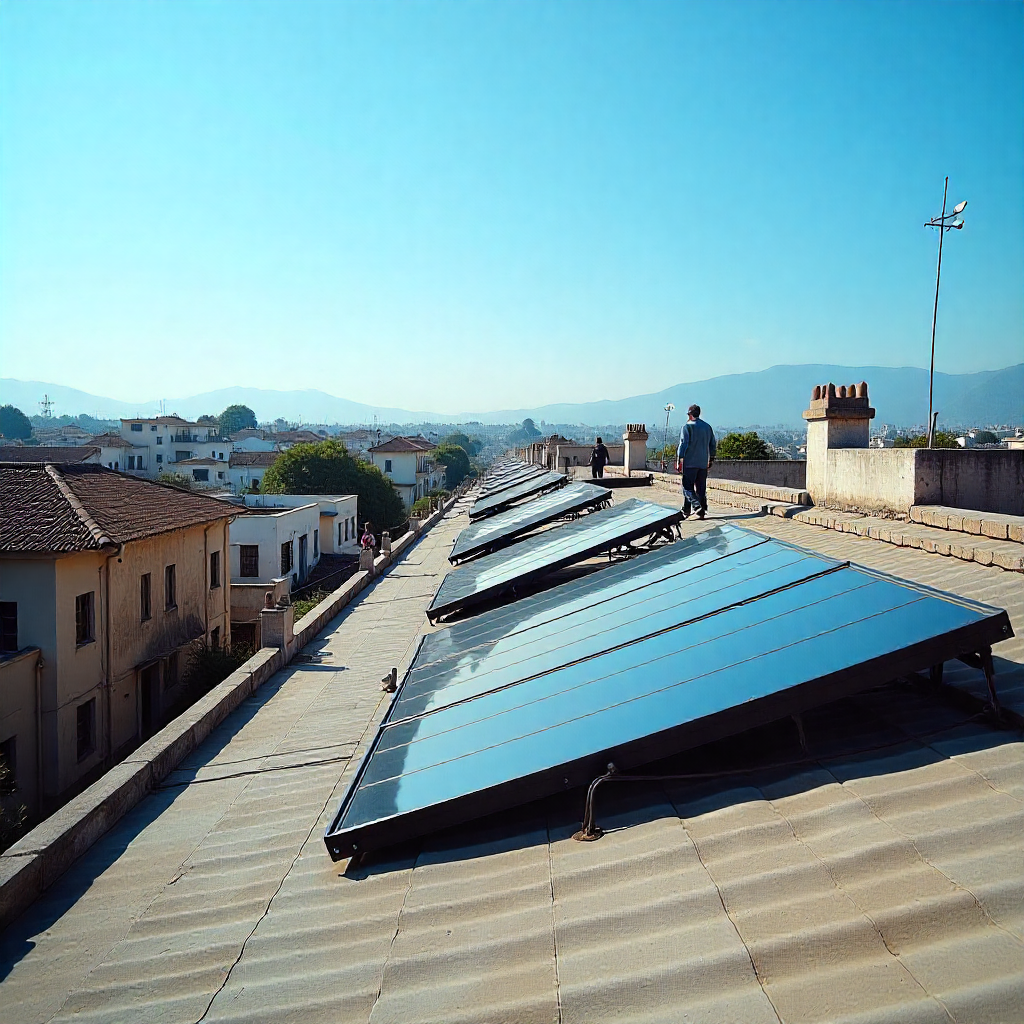Traveling through Guatemala revealed a quiet energy revolution happening on rooftops across the country. I saw many calentadores solares in Guatemala during my journey from Guatemala City to rural highland communities, demonstrating how solar thermal technology is becoming mainstream. These installations weren’t just in affluent neighborhoods; they appeared on modest homes, schools, and small businesses, signaling widespread adoption of this cost-effective solution. The sheer volume of systems visible from roads and rooftops confirmed that solar water heating has moved beyond novelty status to become a practical household necessity.
Urban Adoption Patterns
In Guatemala City’s Zone 10 and Zone 15 neighborhoods, modern apartment complexes featured integrated solar water heating systems as standard amenities. I saw many calentadores solares in Guatemala’s urban core during morning walks, with evacuated tube collectors gleaming on rooftops under the intense equatorial sun. Local installers reported that new construction projects increasingly incorporate these systems during design phases rather than as retrofits. This shift indicates that solar thermal technology has achieved mainstream acceptance among developers and homeowners alike in metropolitan areas.
Rural Implementation Success
Venturing into the Western Highlands near Quetzaltenango revealed even more compelling evidence of solar water heating’s impact. I saw many calentadores solares in Guatemala’s rural communities where traditional energy infrastructure remains unreliable. Families in villages like Nahualá and Santa Catarina Ixtahuacán shared stories of how these systems transformed daily life. Before solar installations, many relied on expensive propane tanks or collected firewood for water heating. Now, consistent hot water availability improves hygiene and reduces household burdens, particularly for women and children traditionally responsible for fuel collection.
Economic Impact Observations
Conversations with system owners consistently highlighted substantial financial benefits. I saw many calentadores solares in Guatemala installed by families seeking relief from rising electricity costs. A household in Antigua reported saving Q800 (approximately $100) monthly after switching from electric resistance heating. Small business owners, including hotel operators and restaurant managers, emphasized how solar water heating improved their profit margins by reducing operational expenses. These firsthand accounts validate the economic case for solar thermal technology across different income levels and business types.
Technology Diversity in Practice
The variety of systems observed demonstrated technological adaptation to local needs. I saw many calentadores solares in Guatemala employing different collector types and configurations. Urban areas predominantly featured evacuated tube systems due to their space efficiency and superior performance. Rural communities often utilized simpler flat-plate collectors that require less maintenance and are easier to repair locally. This technological diversity shows how the market has evolved to serve different segments with appropriate solutions rather than promoting one-size-fits-all products.
Installation Quality Standards
Notably, the quality of installations varied significantly between providers. I saw many calentadores solares in Guatemala installed with professional attention to detail, featuring proper mounting, insulation, and safety components. However, some systems exhibited poor workmanship with inadequate pipe insulation or improper collector orientation. This inconsistency highlights the importance of choosing certified installers and standardized training programs to ensure system longevity and performance. Reputable companies like those found at demonstrate the quality standards achievable with proper expertise.

Community-Based Initiatives
Particularly inspiring were community-driven solar water heating projects. I saw many calentadores solares in Guatemala installed through cooperative purchasing programs in municipalities like San Lucas Tolimán. These initiatives enable groups of families to access bulk pricing and shared installation resources, making the technology more affordable for low-income households. Local NGOs reported that such programs increase adoption rates by 40% compared to individual purchases, showing how collective action accelerates renewable energy access.
Maintenance and Longevity Insights
Long-term system owners provided valuable perspectives on durability and upkeep. I saw many calentadores solares in Guatemala that have operated reliably for over a decade with minimal maintenance. A hotel in Panajachel shared how their 15-year-old system continues to perform efficiently with only periodic fluid changes and collector cleaning. These real-world examples contradict misconceptions about solar thermal technology being unreliable or short-lived, demonstrating proper engineering and installation yield lasting results.
Climate Resilience Demonstrated
Guatemala’s diverse climate zones provided natural testing grounds for system performance. I saw many calentadores solares in Guatemala functioning effectively in both hot coastal regions and cooler highland areas. Even during the rainy season, owners reported consistent hot water production thanks to well-sized storage tanks and backup heating elements. This climate resilience proves that solar water heating works reliably across Guatemala’s varied environmental conditions, not just in ideal sunny scenarios.
Educational Institution Adoption
Schools and universities emerged as significant adopters of solar water heating technology. I saw many calentadores solares in Guatemala installed at educational institutions ranging from primary schools to technical colleges. These systems serve dual purposes: reducing operational costs and providing hands-on renewable energy education for students. At Universidad del Valle de Guatemala, engineering students regularly study the campus’s solar thermal installations, creating a new generation of clean energy professionals.
Future Growth Indicators
The visible momentum suggests continued expansion of solar water heating across Guatemala. I saw many calentadores solares in Guatemala being installed during my visit, with construction sites featuring solar thermal systems as standard components. Local suppliers reported year-over-year sales growth exceeding 20%, driven by rising energy costs and increasing environmental awareness. This growth trajectory positions Guatemala as a regional leader in solar thermal adoption within Central America.
Personal Reflections
Witnessing Guatemala’s solar water heating transformation firsthand provided tangible evidence of renewable energy’s practical benefits. I saw many calentadores solares in Guatemala delivering real value to diverse communities, from urban professionals to rural farmers. These installations represent more than technology adoption; they signify a shift toward energy independence and economic resilience. The widespread presence of these systems demonstrates that sustainable solutions can achieve mainstream acceptance when they deliver clear economic and practical advantages.




